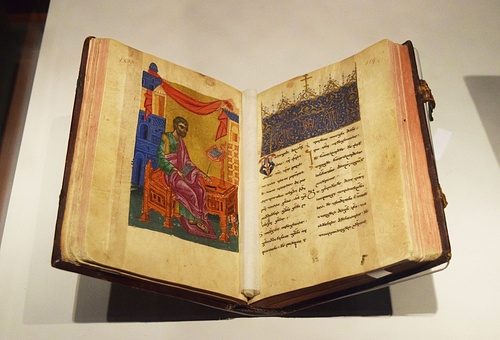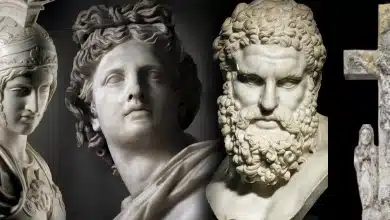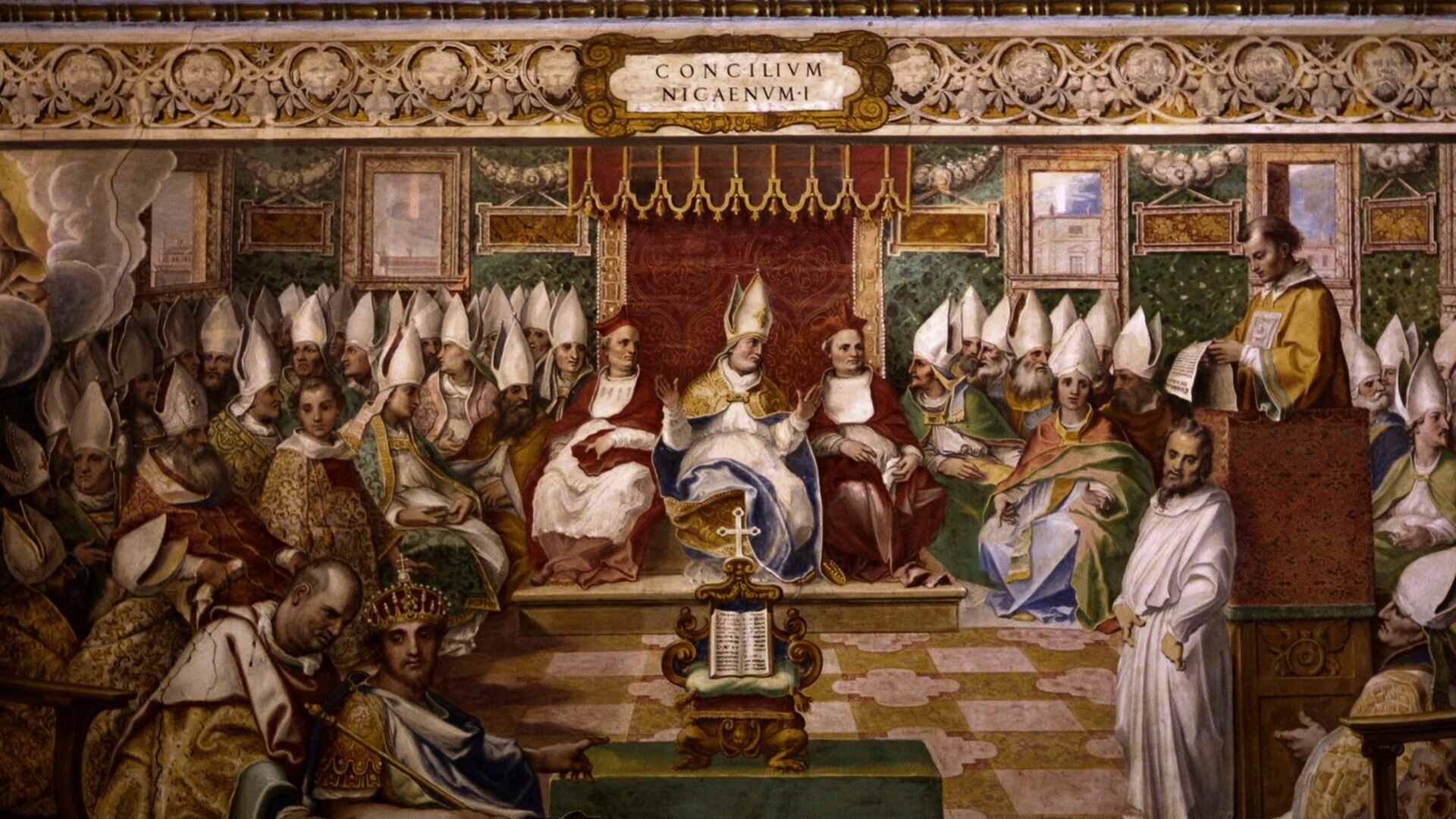Was Jesus crucified? The crucifixion between text and history
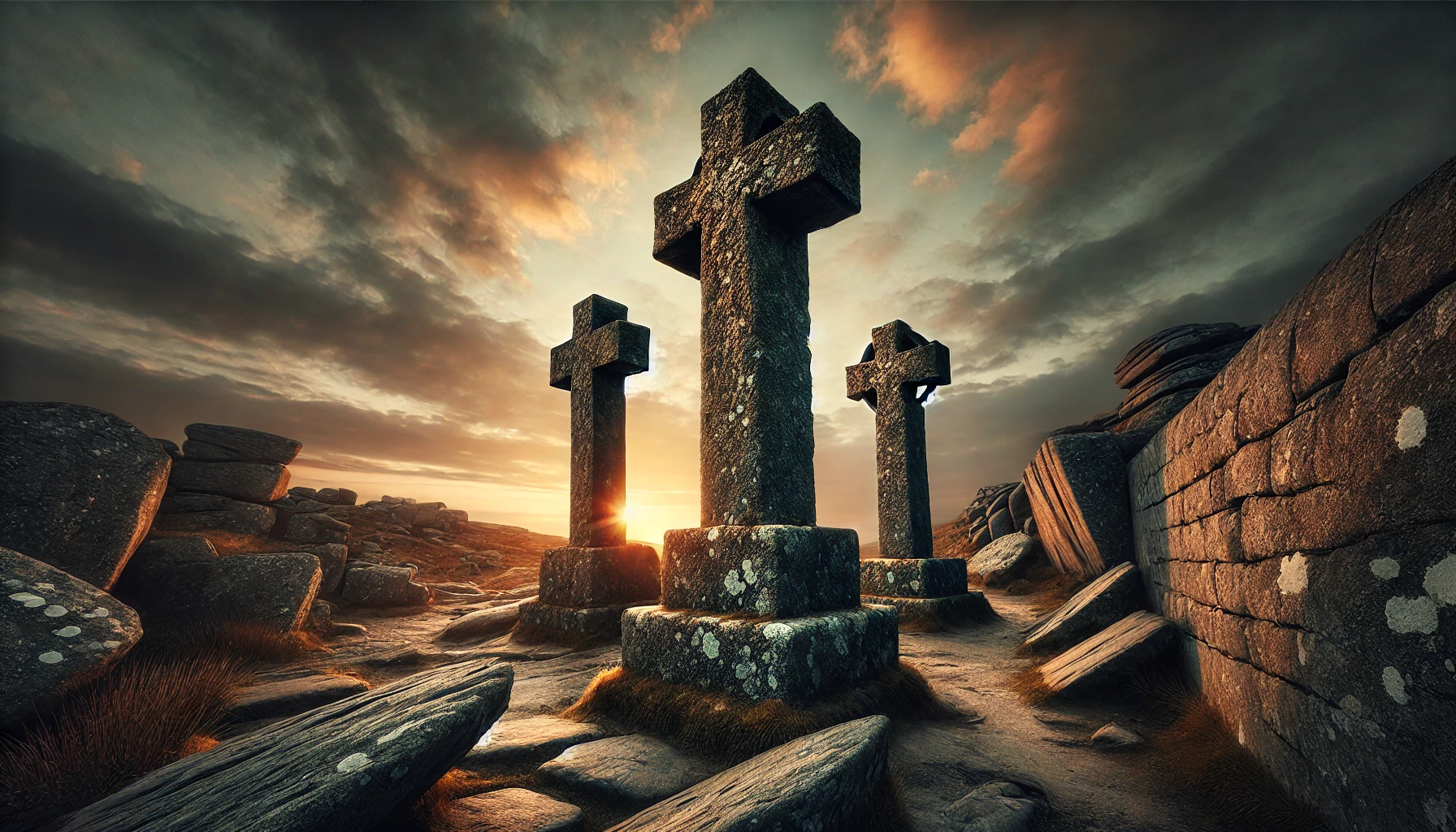
The crucifixion and resurrection of Jesus are central to the Christian faith and have led to the belief that Jesus, as the Son of God, sacrificed Himself on the cross to free humanity from sin. This concept, initially introduced by Paul of Tarsus and later expanded upon by the Church fathers, would not have emerged if the trial and crucifixion of Jesus had not occurred.
The purpose of this article is not to discuss the dogma of redemption or original sin but rather to review the actual event of the crucifixion of Jesus Christ, which, contrary to popular belief, is not an established historical reality.
How can anyone claim that the crucifixion of Christ is not an established historical fact? The account is quoted in all the Gospels, and there are even a few testimonies that cite this event, such as that of Papias of Hierapolis: the point here is not to deny that a crucifixion took place or that a man was crucified, but it’s the identity of this man that has not been established. This article will, therefore, demonstrate that there was indeed a crucifixion and a killing, but it was not Jesus:
- Recently discovered ancient manuscripts prove that the question of Jesus’ crucifixion was highly controversial and that there were groups of Christians who believed that Jesus was crucified only in appearance and that he was substituted.
- No “canonical” sources found in the New Testament today come from eyewitnesses to the event; the gospels and letters were written by authors who never saw Jesus or witnessed the crucifixion but simply reported the events as they were handed down to them.
- There are major discrepancies in detail between the accounts in the 4 Gospels, casting doubt on their accuracy.
- The accounts of the man who was crucified reveal a strange and contradictory attitude. This suggests that he was not in control of the events unfolding around him. Contrary to the portrayal intended by the Gospel writers, their reports of his words and actions seem to reflect this lack of control.
- God would not have allowed his prophet to be crucified. Crucifixion is a terrible death, and the person receiving it is worthy of God’s curse ( Deuteronomy 21-23).
- The Quran, which is God’s last revelation to mankind, clearly affirms that Jesus was neither killed nor crucified and that Allah raised him to Him crucified:
The historical value of the testimonies of the Gospel writers
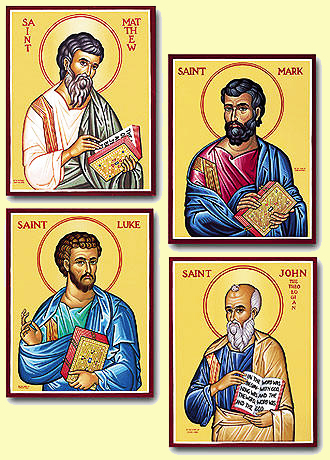
What is the value of the testimony of the Gospel writers? For a story to have historical value, we need an eyewitness account of the event and, if that is not possible, at least the chain of transmission between the various people who gave rise to the writing. In the case of the Gospels, none of these elements are present.
The Gospels were written by anonymous authors (not by the apostles of Jesus, as the names might imply), and the Church gave them names many years later.
Other writings are “anonymous,” literally, “having no name.” These are books whose authors never identify themselves. That is, technically speaking, true of one-third of the New Testament books. None of the Gospels tells us the name of its author. Only later did Christians call them Matthew, Mark, Luke, and John; and later scribes then added these names to the book titles. Also anonymous are the book of Acts and the letters known as 1, 2, and 3 John. Technically speaking, the same is true of the book of Hebrews; the author never mentions his name, even if he wants you to assume he’s Paul
Bart Ehrman Forged: Writing in the Name of God-Why the Bible’s Authors Are Not Who We Think They Are
Aucun des auteurs des évangiles n’a été témoin oculaire de l’événement de crucifixion , ils n’ont même pas côtoyé Jésus :
Since the four Gospels—Matthew, Mark, Luke, and John—begin the New Testament, readers often assume that these works were the earliest written products of the Christian church. This assumption is often coupled with the beliefs that the authors of the four Gospels were eyewitnesses of the events they narrate and that the composition of the Gospels was a relatively simple process of preserving in writing what they had seen and heard firsthand. Such assumptions about the Gospels, however, are inaccurate. All the letters of Paul in the New Testament were written prior to any of the Gospels being completed. The authors of the Gospels, or at least the persons responsible for the final form of the Gospels, were almost certainly not eyewitnesses; and the Gospels themselves are the end products of traditions that were transmitted and preserved in various forms, both oral and written.
Reddish, Mitchell (2011). An Introduction to The Gospels Page 13
Ces écrits furent rédigés en grec , alors que Jésus lui, parlait Araméen :
Whereas the Old Testament was written mostly in Hebrew, with some portions in Aramaic, the New Testament was, apart from a few individual words (e.g. Mark 5:41, 7: 34, 15: 34//Matt. 27: 46), written virtually entirely in a form of ancient Greek. This much has long been recognized by scholars and others alike. However, there have been a number of issues surrounding this Greek of the New Testament. These include: (a) the nature of this Greek, (b) the use of Greek in the early church and
Porter, Stanley E. (2006). « Language and Translation of the New Testament
possibly by Jesus and his followers, (c) the characteristics of this Greek, and (d) recent innovations in the study of the Greek of the New Testament.
The Gospels were written very long after Jesus’ ascension ,Mark’s Gospel probably dates from c. AD 66-70, Matthew and Luke around AD 85-90, and John AD 90-110 :
Mark was probably the first gospel to be written, and scholars have long believed that it was produced around 35 or 40 years after Jesus’ death, around 65 or 70 AD.
Bart Ehrman , Jesus, Interrupted: Revealing the Hidden Contradictions in the Bible (And Why We Don’t Know About Them
In conclusion, the accounts of the crucifixion quoted in the New Testament cannot have any reliable historical value. They are accounts written by unknown people who had collected in their accounts the stories that corresponded to their beliefs.
Evidence from manuscripts regarding Jesus’ non-crucifixion.
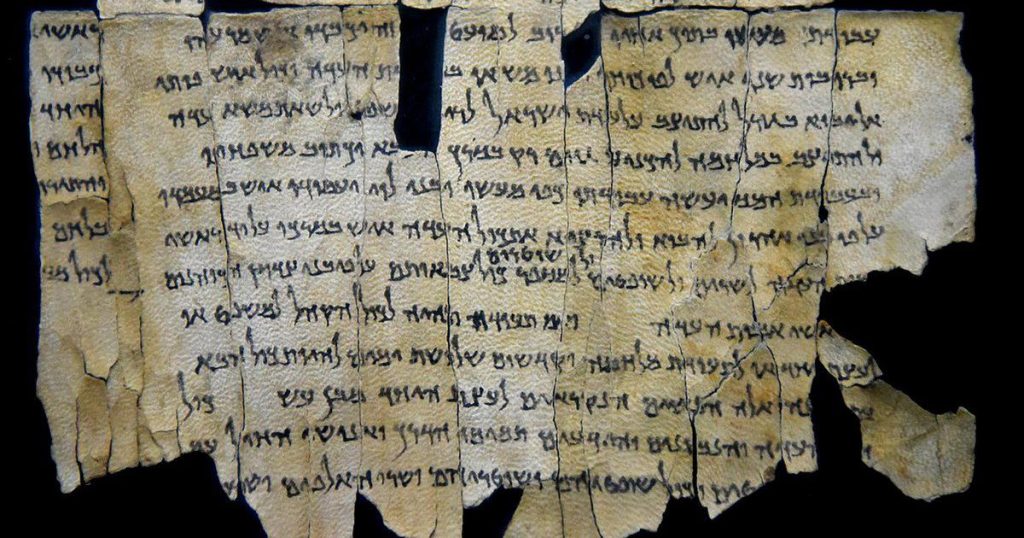
The belief that Jesus was never crucified existed among early Christians; in his book “The Nazarene-or, The Christianity of the Jews, Gentiles and Mohammedans.” John Toland states the following (page 32, chapter 6):
“One cannot help but cry out against the ignorance of those who imagine that this story of Jesus’ death is originally the invention of the Mohammedans. The Bazilidians, at the beginning of Christianity, denied that Jesus Christ had suffered death himself: they said that Simon of Cyrene had been crucified in his place; the Carpocratians who followed them, not to mention others who believed that Jesus Christ had been an ordinary man, similarly believed that he had not been crucified, but rather one of his disciples who resembled him”.
Jean Toland Le Nazaréen- ou, Le christianisme des Juifs, des Gentils et des Mahométans.
He continued :
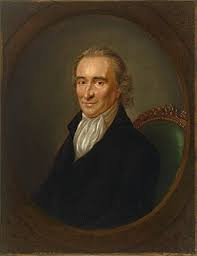
“In the ecclesiastical history, Epiphanius tells us that he read a book entitled “the journey of the apostles” containing the acts of Peter, John, Andrew, Thomas and Paul, that among other things we read the following: “THAT Christ was never crucified, but another in his place, that by this means he had mocked those who imagined they had crucified him”: some have argued that it was Judas who was crucified in his place. This circumstance that Jesus Christ mocked the Jews is also affirmed by the Bazilidians, as can be seen in the passage I have just quoted from Epiphanius.
Jean Toland Le Nazaréen- ou, Le christianisme des Juifs, des Gentils et des Mahométans.
To date, the latest archaeological finds, notably the manuscripts found at Nagaa Hammadi, have demonstrated that many of the earliest Christians did not believe in the crucifixion of Jesus Christ and held the same belief as stated in the Quran: “THAT IT WAS A FAKE SEEMING.” These manuscripts are remarkably representative of early Christian literature and have not been altered in any way since they were written.
Some manuscripts confirm that not all early Christians believed that Jesus was crucified:
The Gospel of Basilides (Gnostic Tradition)
- Attributed to the 2nd-century Gnostic teacher Basilides, this gospel purportedly taught that Jesus was not crucified but that Simon of Cyrene was transformed to appear as Jesus and was crucified in his place.
- Irenaeus, in Against Heresies (Book 1, Chapter 24), describes this belief
Wherefore he did not himself suffer death, but Simon, a certain man of Cyrene, being compelled, bore the cross in his stead; so that this latter being transfigured by him, that he might be thought to be Jesus, was crucified, through ignorance and error, while Jesus himself received the form of Simon, and, standing by, laughed at them.
Iranaeus Against Heresies (Book I, Chapter 24)
Second treaty of the Great Seth:
- Estimated date: 100-200 A.D.
- Original language: Coptic.
- source en ligne : http://www.earlychristianwritings.com/text/greatseth.html.
Extracts :
And I was in the mouths of lions. And the plan which they devised about me to release their Error and their senselessness – I did not succumb to them as they had planned. But I was not afflicted at all. Those who were there punished me. And I did not die in reality but in appearance, lest I be put to shame by them because these are my kinsfolk. I removed the shame from me and I did not become fainthearted in the face of what happened to me at their hands. I was about to succumb to fear, and I <suffered> according to their sight and thought, in order that they may never find any word to speak about them. For my death, which they think happened, (happened) to them in their Error and blindness, since they nailed their man unto their death. For their Ennoias did not see me, for they were deaf and blind. But in doing these things, they condemn themselves. Yes, they saw me; they punished me. It was another, their father, who drank the gall and the vinegar; it was not I. They struck me with the reed; it was another, Simon, who bore the cross on his shoulder. I was another upon Whom they placed the crown of thorns. But I was rejoicing in the height over all the wealth of the archons and the offspring of their Error, of their empty glory. And I was laughing at their ignorance.
The Acts of John
- Label: The Acts of John
- Estimated date: 150-200 A.D.
- Original language: Greek.
- online source: https://www.earlychristianwritings.com/text/actsjohn.html( english) .
Extract
Thou hearest that I suffered, yet did I not suffer; that I suffered not, yet did I suffer; that I was pierced, yet I was not smitten; hanged, and I was not hanged; that blood flowed from me, and it flowed not; and, in a word, what they say of me, that befell me not, but what they say not, that did I suffer.
Coptic Apocalypse of Peter
Estimated date: 200-255 A J.
Original language: copte.
Online source : http://www.earlychristianwritings.com/text/apocalypsepeter.html( anglais).
Presentation: It’s a vision of the crucifixion that’s quite unfamiliar to Christians today: a laughing Jesus above the cross, with a carnal envelope of Jesus who is Simon of Cyrene (according to this doctrine, the one who was crucified was Simon of Cyrene, Jesus, and Simon having exchanged features).
Extracts :
“When he had said those things, I saw him seemingly being seized by them. And I said, “What do I see, O Lord? That it is you yourself whom they take, and that you are grasping me? Or who is this one, glad and laughing on the tree? And is it another one whose feet and hands they are striking? The Savior said to me, “He whom you saw on the tree, glad and laughing, this is the living Jesus. But this one into whose hands and feet they drive the nails is his fleshly part, which is the substitute being put to shame, the one who came into being in his likeness. But look at him and me.”
Critique of the events of the crucifixion story
The story of the crucifixion contains contradictory events
Jesus asked God why he abandoned him
And at the ninth hour Jesus cried with a loud voice, saying, Eloi, Eloi, lama sabachthani? which is, being interpreted, My God, my God, why hast thou forsaken me?
Marc 15:34
These words refute the theory that Jesus came to earth knowing his mission: “to sacrifice himself for the sins of humanity.” Instead, we see a Jesus who didn’t want what was happening to him, worse still, a Jesus who realizes that God has abandoned him to this torture. And, of course, this story is one of the many blows to the doctrine of the divinity of Jesus: how God, tied to the cross, turns to God (and therefore to himself) and asks why he has abandoned him. Praise be to Allah for the benefits of Islam.
Matthew and the Zombies of Jerusalem

In his gospel, Mathiew relates an event that he is the only one to Report. Nowhere in the other Gospels or in the other letters is this story reported, yet it deserved to be reported:
And, behold, the veil of the temple was rent in twain from the top to the bottom; and the earth did quake, and the rocks rent; And the graves were opened; and many bodies of the saints which slept arose, And came out of the graves after his resurrection, and went into the holy city, and appeared unto many. Now when the centurion, and they that were with him, watching Jesus, saw the earthquake, and those things that were done, they feared greatly, saying, Truly this was the Son of God.
Mattew 27:51-54
The scene Mathieu describes is worthy of a zombie movie, so the following questions naturally follow:
- Who were these people? And how many of these “saints” went to Jerusalem?
- Did they talk to anyone? What did they say?
- If they woke up on Good Friday (vs. 52), why didn’t they leave their graves before Easter Sunday (vs. 53)?
- How long did they walk? Did they die again? Did they return to their graves unaided?
- Why is this story only recorded in Matthew and nowhere else in the Bible?
- Why is there no account of this event outside this passage? Why do historians like Josephus or Tacitus never mention crazy stories about dead saints crossing the city of Jerusalem?
What we can see is that Matthew forged this story to accentuate the “power of the crucifixion” and the scale of the phenomenon, which indicates the level of trust that can be placed in the authors of the Gospels; these anonymous authors are ready to invent facts and events to support their dogma.
Differing accounts of the crucifixion

Here’s another aspect that casts doubt on the evangelists’ accounts of the crucifixion: each author of the gospels tells a different version of crucial details about the alleged crucifixion.
Mark reports that the curtain of the temple was torn from top to bottom. Matthew adds that the earth shook, the rocks split, and many saints rose from their tombs, entered the holy city, and appeared before the crowds. As for Luke, he reports that the SunSunrkened and the curtain of the temple were torn in the middle and that when the commander of the Hundred saw what had happened, he glorified God, saying: how loyal this man is! As for Jean, he knows nothing about it!”
These weak points and indications of invalidity do not constitute the entire content of the crucifixion story. Anyone who follows the details of this story as told in the Gospels will realize that there are major discrepancies between them in terms of the story and its circumstances, making it impossible to fully believe it or to know what should be retained as truth.
Divergence over the arrest of Christ:
Matthew affirms that Judas gave a sign to the soldiers that they should know Jesus by kissing him; John says that it was Jesus who told them that they wanted him.
| Matthieu 26 | Jean 18 |
| And while he yet spake, lo, Judas, one of the twelve, came, and with him a great multitude with swords and staves, from the chief priests and elders of the people. Now he that betrayed him gave them a sign, saying, Whomsoever I shall kiss, that same is he: hold him fast. And forthwith he came to Jesus, and said, Hail, master; and kissed him. And Jesus said unto him, Friend, wherefore art thou come? Then came they, and laid hands on Jesus, and took him. | When Jesus had spoken these words, he went forth with his disciples over the brook Cedron, where was a garden, into the which he entered, and his disciples. And Judas also, which betrayed him, knew the place: for Jesus ofttimes resorted thither with his disciples. Judas then, having received a band of men and officers from the chief priests and Pharisees, cometh thither with lanterns and torches and weapons. Jesus therefore, knowing all things that should come upon him, went forth, and said unto them, Whom seek ye? They answered him, Jesus of Nazareth. Jesus saith unto them, I am he. And Judas also, which betrayed him, stood with them. As soon then as he had said unto them, I am he, they went backward, and fell to the ground. Then asked he them again, Whom seek ye? And they said, Jesus of Nazareth. Jesus answered, I have told you that I am he: if therefore ye seek me, let these go their way |
Divergence over who carried the cross:
Who carried the cross? Jesus or Simon?
| Jean 19 | Luc 23 |
| Then delivered he him therefore unto them to be crucified. And they took Jesus, and led him away. And he bearing his cross went forth into a place called the place of a skull, which is called in the Hebrew Golgotha: Where they crucified him, and two other with him, on either side one, and Jesus in the midst. And Pilate wrote a title, and put it on the cross. And the writing was, JESUS OF NAZARETH THE KING OF THE JEWS. | And as they led him away, they laid hold upon one Simon, a Cyrenian, coming out of the country, and on him they laid the cross, that he might bear it after Jesus. |
Divergence over the death of Judas
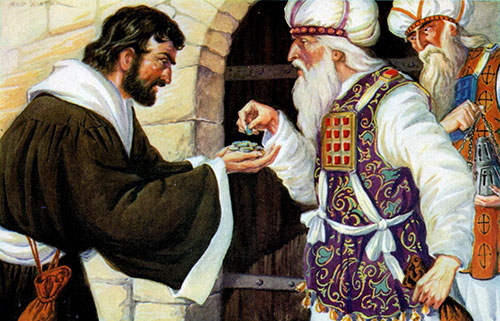
What did Judas do with the blood money he received to betray Jesus?
- He bought a field (Acts 1 : 18)
- He threw all of it into the temple and left. The priests could not put the blood money in the temple treasury, so they used to buy a field to bury strangers. (Matthew 27:5)
How did Judas die?
- After he threw the money into the temple he left and and hanged himself. (Matthew 27:5)
- He purchased a field with the reward of iniquity; and falling headlong, he burst asunder in the midst, and all his bowels gushed out.(Acts 1:18)
Why is the field called the “blood field”?
- Since the priests bought it with blood money(Matthew 27:8)
- Because of Judas’ bloody death in there (actes 1:19)
| Matthieu 27 | Actes 1 |
| Then Judas, which had betrayed him, when he saw that he was condemned, repented himself, and brought again the thirty pieces of silver to the chief priests and elders, Saying, I have sinned in that I have betrayed the innocent blood. And they said, What is that to us? see thou to that. And he cast down the pieces of silver in the temple, and departed, and went and hanged himself. And the chief priests took the silver pieces, and said, It is not lawful for to put them into the treasury, because it is the price of blood. And they took counsel, and bought with them the potter’s field, to bury strangers in. Wherefore that field was called, The field of blood, unto this day. | Now this man purchased a field with the reward of iniquity; and falling headlong, he burst asunder in the midst, and all his bowels gushed out. 19 And it was known unto all the dwellers at Jerusalem; insomuch as that field is called in their proper tongue, Aceldama, that is to say, The field of blood. |
Disagreement about what was written on the cross (in principle, such a sentence should be clear)
What were the exact words on the cross?
- » This is Jesus, King of the Jews » (Matthew 27:37)
- « the king of the Jews » (Mark 15:26)
- « This is the king of the Jews » (Luke 23:38)
- « Jesus of Nazareth, King of the Jews » (John 19:19)
| Matthew 27 | Mark 15 | Luke 23-38 | John 19-19 |
| And set up over his head his accusation written, THIS IS JESUS THE KING OF THE JEWS. | And the superscription of his accusation was written over, THE KING OF THE JEWS. | And a superscription also was written over him in letters of Greek, and Latin, and Hebrew, THIS IS THE KING OF THE JEWS. | And Pilate wrote a title, and put it on the cross. And the writing was, JESUS OF NAZARETH THE KING OF THE JEWS |
Discrepancy over the conversation between Jesus and the two bandits who were crucified with him
- According to Matthew, the two robbers were insulting Jesus.
- According to Luke, one insulted him, and the other asked him to remember him.
| Matthew 27:44 | Luc 23:39-43 |
| The thieves also, which were crucified with him, cast the same in his teeth. | And one of the malefactors which were hanged railed on him, saying, If thou be Christ, save thyself and us. But the other answering rebuked him, saying, Dost not thou fear God, seeing thou art in the same condemnation? And we indeed justly; for we receive the due reward of our deeds: but this man hath done nothing amiss. And he said unto Jesus, Lord, remember me when thou comest into thy kingdom. And Jesus said unto him, Verily I say unto thee, To day shalt thou be with me in paradise. |
Discrepancy over crucifixion time:
- According to John, at the sixth hour Jesus was at Pilate’s house.
- Luke states that Jesus was on the cross at the sixth hour.
| Jean 19 | Luc23 |
| And it was the preparation of the passover, and about the sixth hour: and he saith unto the Jews, Behold your King! But they cried out, Away with him, away with him, crucify him. Pilate saith unto them, Shall I crucify your King? The chief priests answered, We have no king but Caesar. | And it was about the sixth hour, and there was a darkness over all the earth until the ninth hour. And the Sun darkened, and the veil of the temple was rent in the midst. And when Jesus had cried with a loud voice, he said, Father, into thy hands I commend my spirit: and having said thus, he gave up the ghost. |
Divergence over the last sentence Jesus uttered:
According to the Gospels, what were Jesus’ last words before he died?
- “Father, into your hands I commend my spirit! (Luc 23:46)
- « It is finished » (John 19:30)
| Luc 23:46 | Jean 19 |
| And when Jesus had cried with a loud voice, he said, Father, into thy hands I commend my spirit: and having said thus, he gave up the ghost. | When Jesus therefore had received the vinegar, he said, It is finished: and he bowed his head, and gave up the ghost. |
Divergence on what the centurion says after the presumed death of Jesus:
- « Certainement, cet homme était juste. » (Luc 23:47)
- « Assurément, cet homme était Fils de Dieu » (marc 15:39)
| Marc 15.39 | Luke 23:47 |
| And when the centurion, which stood over against him, saw that he so cried out, and gave up the ghost, he said, Truly this man was the Son of God. | Now when the centurion saw what was done, he glorified God, saying, Certainly this was a righteous man. |
God would not have let his prophet die an unworthy death
Jesus praying to God

He went a little farther and fell on His face, and prayed, saying, “O My Father, if it is possible, let this cup pass from Me; nevertheless, not as I will, but as You will.”
Mathiew 26-39
Same text in: Mark 14:36 and Luke 22:42 :
who, in the days of His flesh, when He had offered up prayers and supplications, with vehement cries and tears to Him who was able to save Him from death, and was heard because of His godly fear,
Hebrews 5.7
Furthermore, this is not the first time Jesus has been assassinated, but each time he escaped with the help of Allah, an example cited in Luke:
So all those in the synagogue, when they heard these things, were filled with wrath, and rose up and thrust Him out of the city; and they led Him to the brow of the hill on which their city was built, that they might throw Him down over the cliff. Then passing through the midst of them, He went His way.
Luke 4:28-30
The dead man on the cross is cursed

In his account of his conversion to Islam, Joshua Evans , tells that the story of the crucifixion of Jesus is among the things that led him to embrace Islam, here is part of his account :
“[The Scribes] were very clever; they decided we had to find a way to crucify Him. Because if they crucify Jesus, He’ll be cursed; Paul lets this cat out of the bag in Galatians when he says
“Christ has redeemed us from the curse of the law, having become a curse for us (for it is written, “Cursed is everyone who hangs on a tree” Galatians 3.13
In Deuteronomy, which is part of Jewish law, if you take a criminal and hang him from a tree, that staff is damned in this life and the next:
« If a man has committed a sin deserving of death, and he is put to death, and you hang him on a tree, his body shall not remain overnight on the tree, but you shall surely bury him that day, so that you do not defile the land which the Lord your God is giving you as an inheritance; for he who is hanged is accursed of God.. » Deuteronomy 21:22-23
If we can crucify Jesus, he cannot be the Messiah. He can’t because God’s Messiah can’t be crucified and cursed according to the very law he says he came to fulfill. So it’s a very clever thing they’ve decided to do.
But when Jesus heard about this crucifixion, what did he do? He fled to the Garden of Gethsemane. Is there anyone here from Palestine? The Garden of Gethsemane is outside the ancient boundaries of Jerusalem. He left the whole city. He fell on his face and prayed to God to save him; he knew that if he was crucified, they would not believe in him; now I realize why Jesus did not want to be crucified because if it were so, he would have been a liar, he would not have fulfilled the law of Month and would have been cursed according to that same law.”
A more coherent story
The Quran, the last revelation to mankind, gives no details on the events of the crucifixion. Several Exegetes of the Quran have tried to give explanations to the Quran verses, the most widely accepted version being that of the young apostle who “sacrifices” himself for Jesus and agrees to take his image in order to replace him.
But nowhere, either in the exegetes of the Quran or in the Gospels, can we find such a coherent story of the crucifixion as that found in the Gospel of Barnabas.
The apocryphal Gospel of Barnabas is a manuscript dating from the late 16th or early 17th century. The author of the work claims to be the biblical Barnabas, one of the 12 apostles of Jesus Christ. As the manuscripts of this gospel date from the Middle Ages, the majority of scholars consider it a late-formulated text, however many suggest that it contains remnants of earlier apocryphal works, probably Ebionite as proposed by Cirillo, Luigi; Fremaux, Michel in their books Évangile de Barnabé. (1977. Beauchesne. p. 202). or even Diatessaronic, as suggested by Joosten in “The Gospel of Barnabas and the Diatessaron “Jan (January 2002).
According to the Gospel of Barnabas:
- It was Judas, not Jesus, who was crucified on the cross.
- When Judas betrayed Jesus and led the Roman soldiers to arrest him, the angels took Jesus out of a window and up into heaven.
- When Judas entered the room, his appearance was transformed into that of Jesus, and the Romans arrested him and brought him to be crucified.
- This transformation of appearance fooled not only the Romans but also the Pharisees, the high priest, Christ’s disciples, and his mother, Mary.
- After three days of burial, Judas’s body was stolen from his tomb with rumors that Jesus had risen from the dead.
- When Jesus was informed of what had happened in the third heaven, he prayed to God to send him back to earth. Then he came down and gathered his mother and disciples and told them the truth about what had happened. He then ascended back to heaven.
This story is much more coherent than what the Gospels report:
- Rather than let his prophet die an ignoble death, Allah saved his prophet and answered his prayers, and it was the traitor who was crucified as divine justice dictates: “They have prepared a net for my steps; My soul is bowed down;They have dug a pit before me;Into the midst of it they themselves have fallen. Selah” Psalms (57:5)
- Rather than Jesus crying out on the cross: “My God, why have you forsaken me?“, it’s Judas who utters this cry: “They took him to Mount Calvary, where the evildoers were hanged. There they crucified him naked, so that the mockery would be greater. Judas was really doing nothing other than crying out: “God, why have you forsaken me, for the evildoer has fled, and I have been wrongly killed? “(Gospel of Barnabas chapter 217).
- There was indeed a theft of the crucified man’s body, and this information was widespread at the time.
- Matthew must have invented a story about the Jewish priests who paid the Roman soldiers to spread the news that the body of the Crucified One had been stolen. “Now while they were going, behold, some of the guard came into the city and reported to the chief priests all the things that had happened. When they had assembled with the elders and consulted together, they gave a large sum of money to the soldiers, saying, “Tell them, ‘His disciples came at night and stole Him away while we slept.’ And if this comes to the governor’s ears, we will appease him and make you secure.” So they took the money and did as they were instructed; and this saying is commonly reported among the Jews until this day.“.Matthew 28:11
Some excerpts from Barnabas’ gospel account:
215.
When the soldiers with Judas drew near to the place where Jesus was, Jesus heard the approach of many people, wherefore in fear he withdrew into the house. And the eleven were sleeping.
Then God, seeing the danger of his servant, commanded Gabriel, Michael, Rafael, and Uriel, his ministers, to take Jesus out of the world.
The holy angels came and took Jesus out by the window that looketh toward the South. They bare him and placed him in the third heaven in the company of angels blessing God for evermore.
216.
Judas entered impetuously before all into the chamber whence Jesus had been taken up. And the disciples were sleeping. Whereupon the wonderful God acted wonderfully, insomuch that Judas was so changed in speech and in face to be like Jesus that we believed him to be Jesus. And he, having awakened us, was seeking where the Master was. Whereupon we marvelled, and answered: ‘Thou, Lord, art our master; hast thou now forgotten us?’
And he, smiling, said: ‘Now are ye foolish, that know not me to be Judas Iscariot!’
And as he was saying this the soldiery entered, and laid their hands upon Judas, because he was in every way like to Jesus.
We having heard Judas’ saying, and seeing the multitude of soldiers, fled as beside ourselves.
And John, who was wrapped in a linen cloth, awoke and fled, and when a soldier seized him by the linen cloth he left the linen cloth and fled naked. For God heard the prayer of Jesus, and saved the eleven from evil.
217.
The soldiers took Judas and bound him, not without derision. For he truthfully denied that he was Jesus; and the soldiers, mocking him, said: ‘Sir, fear not, for we are come to make thee king of Israel, and we have bound thee because we know that thou dost refuse the kingdom.’
Judas answered: ‘Now have ye lost your senses! Ye are come to take Jesus of Nazareth, with arms and lanterns as [against] a robber; and ye have bound me that have guided you, to make me king!’
Then the soldiers lost their patience, and with blows and kicks they began to flout Judas, and they led him with fury into Jerusalem.
Gospel of barnabas 215-217

